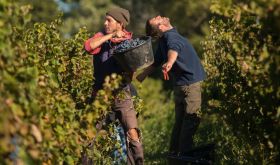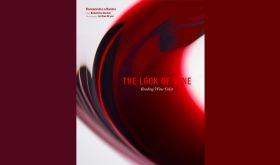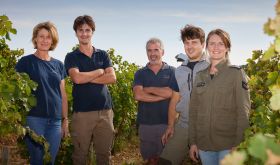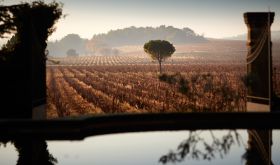See details of our Italian Wine Festival for hundreds of new Italian tasting notes.
It was scorchingly hot in Tuscany last week. In the middle of the afternoon the only people on the streets of Montalcino were tourists without their own darkened room to take shelter in. We sat out the heatwave under some trees in the outdoor part of a little, well, what was it exactly? Not quite a café and certainly not a full-blown restaurant, but some indication of what was on offer was readily available at other tables. On our way from a good lunch to good dinner, we shared a litre bottle of water but we were surrounded by other visitors to the Brunello town to whom were borne flights of dark red wines with beautiful little platters of local cheeses, proscuitto and salami. They solemnly sat, sipped and nibbled.
This was not an isolated example of interesting wine being offered by the glass simply because Montalcino is a famous wine town. All over Italy today, or at least the Italy that is regularly visited by tourists, which is surely a good 85 per cent of the country, are places just like this that serve a wide range of interesting wines by the glass (by no means all of them Italian in the cities) and carefully-chosen and prepared simple food to go with them.
According to such figures as I have been given, although I am always a little suspicious of Italian statistics, there are about 600 enoteche (an enoteca being a place that sells bottles as well as glasses of wine to consumers) as well as around 8,000 wine bars, plus about 2,000 less formal establishments that also tend to be wine bars in effect. The tiny town of Bagno Vignoni described by Nick in his article today had at least three attractive wine bars, quite apart from those that may have lurked in its hotels. Everywhere we went on our very varied six-day Tuscan itinerary we saw people relaxing with glasses of wine, both locals and tourists.
And it was not just the provenance of the wines that I found so attractive but the prices as well. Even the Michelin-starred Pellicano, Porto Ercole's super-luxurious coastal hideaway (where I had the pleasure of leaving my bathroom as messy as those I used to clean when a chambermaid there on £4 a week) offered a wide range of wines at lunchtime at under 30 euros or £20 a bottle, and Quattro Gigli in Motópoli, the ideal place for a meal just before boarding a plane at Pisa, had a sensational wine collection with some of the prices on the well-thumbed wine list less than retail prices in the UK.
The other distinction of Italy as a destination for wine lovers is the exceptional quality of the glasses. I know of no other country which has adopted such high general standards for what it serves its wines in. Every stem seems to be at least three inches tall and often more. Glass shapes vary considerably according to the precise sort of wine served therein, and they all somehow seem to be kept sparkling clean. This together with relatively low prices adds up to a conundrum, I fully admit, but one from which I am extremely happy to benefit. Is this yet another instance of Italy's mysterious economic underpinning? Or is it the result of being able to rely on so many family members to work in each establishment?
If this were the reason then France should be in a very similar position but there is a marked difference between how wine is presented to tourists in France and their counterparts in Italy. Far more British tourists visit France than Italy (fact), and one of France's major attractions to the typical Brit is its wine (opinion), but in my considerable experience of visiting France, the French are years behind the Italians in taking advantage of this. They rarely offer anything other than the most basic wine by the glass; they rarely use decent glasses; and there are remarkably few wine bars.
This seems crazy to me, not least in a peak holiday month when we have been exposed to the detail of the proposals of the European Agriculture Commissioner Mariann Fischer-Boel for reducing Europe's wine producing woes. Prime among these, according to Mrs Fischer Boel is the need to "improve the competitiveness of European wine producers and strengthen the reputation of our quality wines as the best wines in the world; to re-conquer our traditional markets and gain new ones."
Are the French missing a trick here? If just some of last year's 11 million British visitors to France (quite apart from the millions from other countries) could be as certain of being able to pass the time in some village square toying with a glass of interesting wine and perhaps some charcuterie or other simple solid matter, would this not help France's notorious wine surplus and the reputation and sales of her wines abroad? I make the suggestion not to carp but because I love France and its wines so much.
Our short stay in Tuscany reminded me what a stunning array of vintages we have to choose from. In Italy in general, in contrast with the rule for 21st century French vintages, it is the two most recent even years, 2006 and 2004, that have been outstanding. Late rains robbed 2005 (and 2002) of greatness although there are some attractive wines. As in France, 2003 was marked by extreme heat but many Chianti Classicos are looking very toothsome now – presumably because Chianti country is relatively high and the struggle is usually to ripen the grapes fully. The 2001 vintage was unequivocally exceptionally good in Tuscany and many wines are already drinking well.
The Tuscan wines to lay in now for future drinking are probably the serious 2004 Chiantis, notably Chianti Classico Riservas or straight Chianti Classico from the best estates, and the most classical of the 2001 Brunellos, both regular and Riservas. Some of my favourites are listed here.
For current drinking the best 1999 Chiantis are also looking good (whereas many 1997s seem to be drying out). The 2004 Rosso di Montalcino wines are lovely and 2002s from the best Montalcino producers can be good buys, as are many representatives from the newer regions of Tuscany such as the increasingly popular Morellino di Scansano and a host of less familiar names from the Maremma treading in the footsteps of the likes of Sassicaia, Tignanello and Ornellaia. These and a substantial, almost shocking, proportion of Tuscan labels owe much to such international grape varieties as Cabernet Sauvignon and Merlot but there is a perceptible move back towards the quintessential Tuscan grape Sangiovese and its more traditional blending partners.
And not all Tuscan whites are Chardonnay. The lively Vermentino of Sardinia is gaining increasing respect, and would certainly have suited me much better than an oaked Chardonnay under those trees in Montalcino.
Superior Tuscan reds for the cellar
CHIANTI CLASSICO ZONE
Castello di Fonterutoli, Siepi 2004 IGT Toscana
Castello di Ama 2004 Chianti Classico
Bibbiano, Vigna del Capannino 2004 Chianti Classico Riserva
Castello La Leccia, Bruciagna 2004 Chianti Classico Riserva
Casaloste 2003 Chianti Classico Riserva
Il Colombaio Di Cencio, I Massi 2003 Chianti Classico Riserva
Felsina 2003 Chianti Classico Riserva
Fontodi, Vigna del Sorbo 2003 Chianti Classico Riserva
Il Molino Di Grace 2003 Chianti Classico Riserva
Fattoria Nittardi 2003 Chianti Classico Riserva
BRUNELLO DI MONTALCINO ZONE
Argiano, Solengo 2004 IGT Toscana
Donatella Cinelli Colombini 2001 Brunello di Montalcino Riserva
Fattoi 2001 Brunello di Montalcino Riserva
Mastrojanni, Vigne Schieno d'Asino 2001 Brunello di Montalcino Riserva
Palazzo 2001 Brunello di Montalcino Riserva
La Poderina, Poggio Banale 2001 Brunello di Montalcino Riserva
Il Poggione 2001 Brunello di Montalcino Riserva
Sesti, Phenomena 2001 Brunello di Montalcino Riserva
For international stockists see www.winesearcher.com
For tasting notes on hundreds of Tuscan reds see tasting notes list













